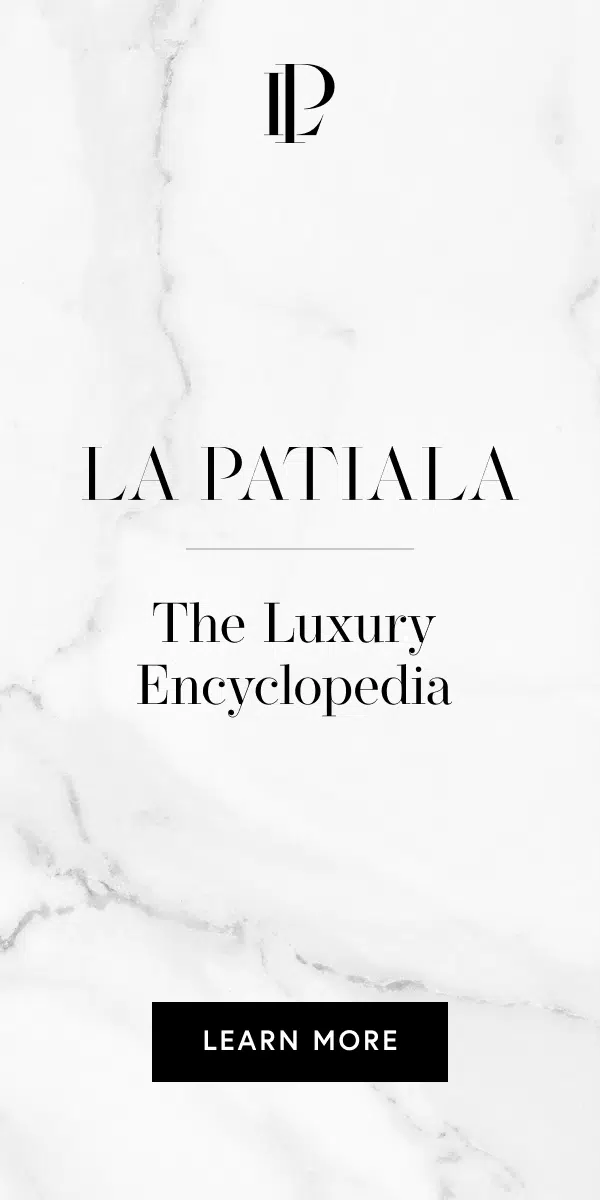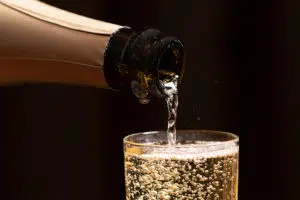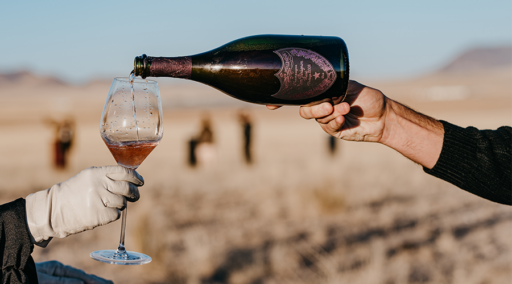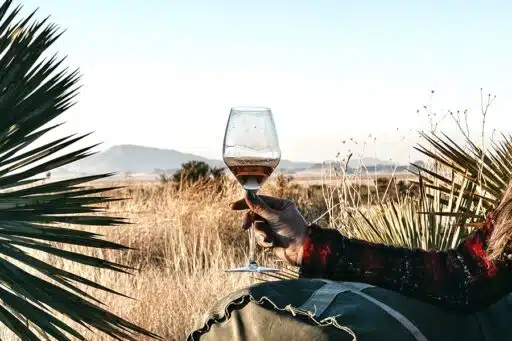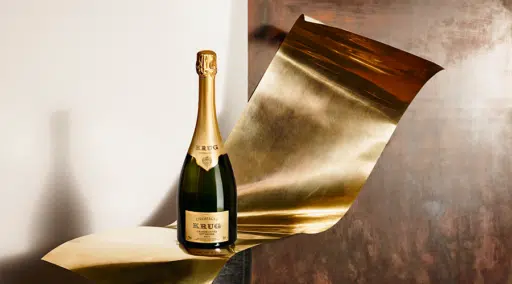The Definitive Guide to Champagne and Sparkling Wine
Our guide to everything that makes Champagne and sparkling wine so unique, including how it is produced, the difference between vintage and non-vintage, and the different styles.
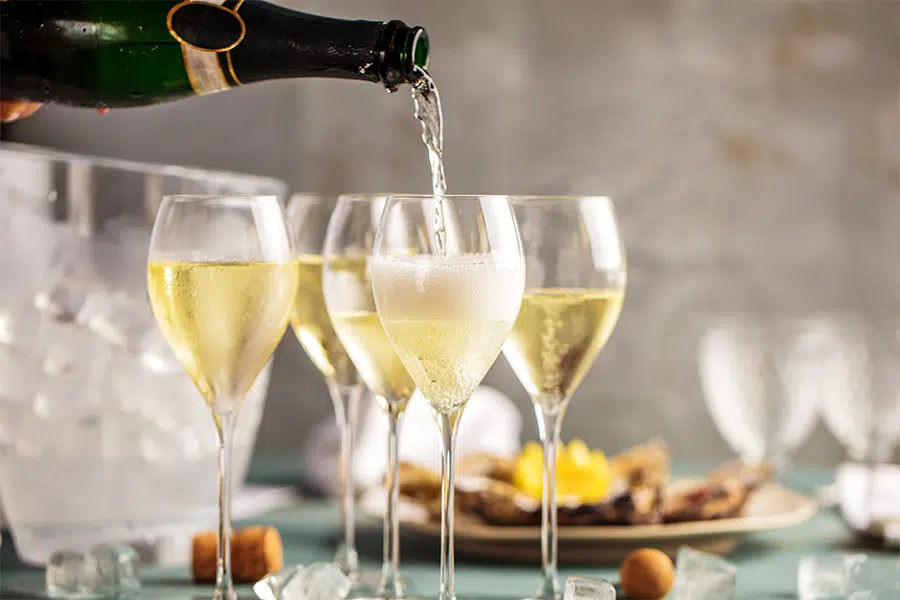
All Champagne is sparkling wine, but not all sparkling wine is Champagne. Champagne is a protected designation of origin, so it must come from the Champagne region of France. In addition, its production is subject to very strict regulations that include planting, production, and labeling requirements. It’s a complicated wine, but our Champagne guide will teach you everything you need to know.
The most important regulations are grape variety, yield, secondary alcoholic fermentation in the bottle, and lees contact. Producers can use only seven kinds of grapes. Chardonnay, Pinot Noir, and Meunier are the most commonly used. (Pinot Blanc, Arbanne, Petit Meslier, and Fromenteau are also permitted, but seldom seen.) Blanc de Blancs Champagne uses only white grapes (Chardonnay). Blanc de Noirs Champagne only uses black grapes (Pinot Noir and Meunier).
Non-vintage and Vintage Champagne
The majority of Champagne is non-vintage, which means it’s a blend of wines from different years. The reason for blending is that most Champagne houses have a signature house style that they recreate year over year. With Champagne’s varied weather and growing conditions, it’s not possible to produce a consistent wine every year. As a result, winemakers blend reserve wines from different years to create their house style. This means every bottle of non-vintage Champagne should taste the same.
Vintage Champagnes are produced only in the best years. They can only feature wine produced from grapes harvested that year, which is called a “vintage” in the wine industry. Most houses produce both vintage and non-vintage Champagne. However, some producers, such as Salon and Dom Pérignon, exclusively produce vintage Champagnes. In bad-weather years, they won’t release a vintage.
How Champagne Is Produced
The production method for Champagne is called the traditional method. Every Champagne must use this method, or it can’t be called Champagne. Many high-quality sparkling wines around the world also use the traditional method to create a similar wine.
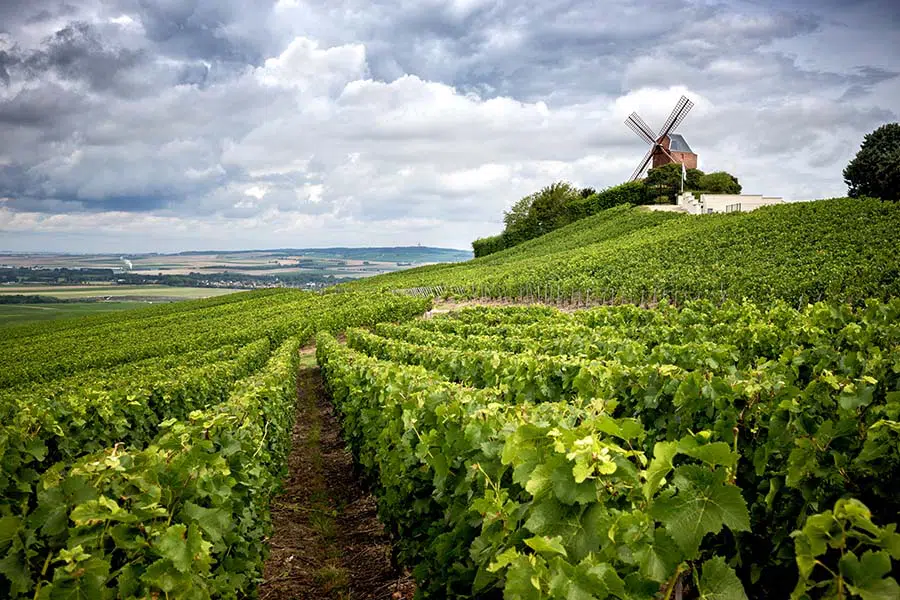
Harvest and Base Wine
First, workers hand harvest the grapes, then they press whole bunches gently, which releases the juice. Next, the juice undergoes alcoholic fermentation using cultivated yeast, most commonly Prise de Mousse, to ensure reliable fermentation. This creates a dry base wine with a low ABV of around 10-11 percent. This low level of alcohol is important because the process that gives Champagne its bubbles raises the alcohol level by approximately 1.5 percent.
Blending
The next process is blending. Winemakers blend wines from different varieties, parcels, vineyards, and vintages to achieve their desired style. Then, this blended wine is bottled with a mixture of yeast, sugar, and yeast nutrients called the liqueur de tirage, which is then sealed with a crown cap closure (like a beer bottle cap). The liqueur de tirage causes the wine to undergo a second alcoholic fermentation inside the sealed bottle.
Second Alcoholic Fermentation
One by-product of alcoholic fermentation is carbon dioxide. Usually, the carbon dioxide escapes from open tanks where the alcoholic fermentation takes place. But in the production of Champagne, the carbon dioxide has nowhere to go, so it dissolves back into the wine, giving it its sparkle. This second alcoholic fermentation also creates an enormous amount of pressure within the bottle, around 5-6 ATM or bars.
Autolysis
After the second alcoholic fermentation is complete, the dead yeast cells settle on the bottom of the bottle. This sediment is called lees. Champagne must rest on the lees for a minimum of 12 months. Autolysis, which is the enzymatic breakdown of dead yeast cells, gives Champagne its yeasty, biscuity aromas and flavors. In addition, the best houses will let their wines rest on the lees for many years, which adds complexity to the Champagne. Salon famously ages its Champagnes for around 10 years, while Dom Pérignon ages its standard vintage wines for around seven years, its P2 for 16, and P3 for 30.
Riddling
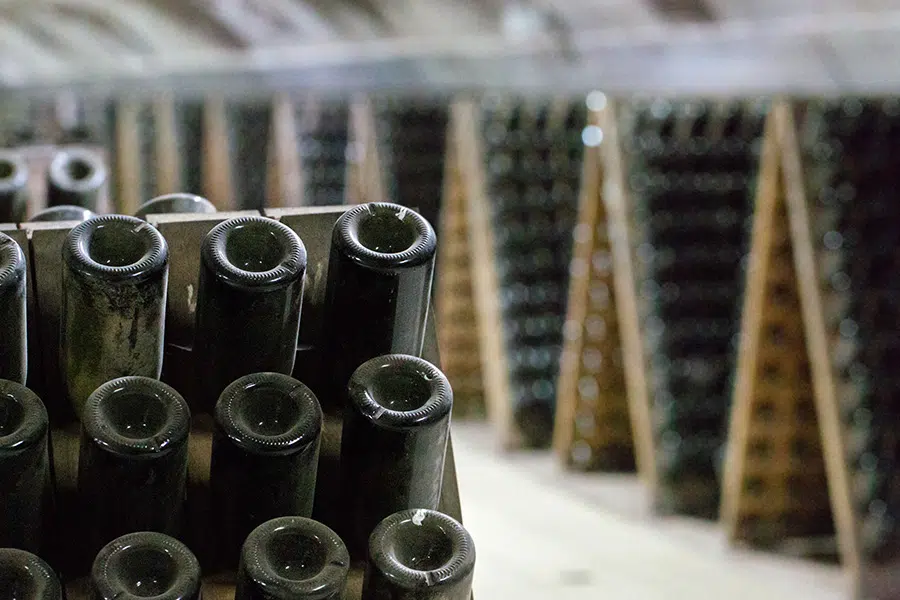
Once the Champagne has aged, producers use a process called riddling to position the lees in the neck of the bottle. In the traditional method, they place the bottles in A-frames and rotate them a quarter turn every day while slowly raising the bottles from a horizontal position to a vertical position. This method gently slides the lees deposit into the neck of the bottle over a few weeks. A quicker way is to use a gyropalette, a machine that does the same thing in just a few days.
Disgorgement
The process of removing the lees deposit is disgorgement. The necks of the bottles are submerged into an icy brine, which freezes the wine and the deposit in the neck of the bottle. The bottles are removed and placed upright. Next, a machine removes the crown cap removed and the pressure inside the bottle forces the frozen lees/sediment out from the neck. The machine tops up the Champagne inside the bottle with liqueur d’expedition, which contains the dosage, which is a mixture of wine and sugar that determines the final level of sweetness of the wine.
Final Steps
The bottle is then sealed with the mushroom-shaped cork with which we are so familiar, and a wire cage is secured around it to prevent the cork from popping out due to the pressure inside of the bottle. Finally, the bottle’s foil and labels are added, and the Champagne typically undergoes additional aging in the bottle in order for the dosage to incorporate into the wine.
How to Drink Champagne
Many people drink Champagne straight out of the refrigerator, but this temperature is actually a little too cold to fully appreciate Champagne’s aromas and flavors. Instead, let the Champagne warm up a little bit to around 50°F. If you’re storing your Champagne in a wine cooler, you can set the temperature to 50°F and it’s always the perfect temperature. If you’re storing your Champagne in the refrigerator — which is okay for short periods of time, but not for long-term storage — remove it about 20 minutes before you want to open the bottle. This will allow the wine to warm up to the appropriate temperature.
Flutes might be the most common glasses for drinking Champagne, but you’ll have a better experience drinking out of a specially designed Champagne glass or a regular white wine glass.
Sweetness Levels in Champagne and Sparkling Wine
Most Champagne is slightly sweet, which balances the high acidity. However, there are many different levels of sweetness, from completely dry to very sweet. Here is a mini-guide to the most common levels of sweetness in Champagne.
- Brut Nature or Zero Dosage — This is the driest type of Champagne, which has no added sugar. The absence of sugar makes the wines bracingly high in acidity. It contains fewer than 3 grams of sugar per liter (g/l).
- Extra Brut — Extra Brut is a dry Champagne. It contains between 0 and 6 g/l sugar, so it’s still refreshing, but never cloyingly sweet.
- Brut — This is the most common type of Champagne and can range from dry to slightly sweet. Brut Champagne contains 0-12 g/l sugar.
- Extra Dry — While the name might make you think extra dry Champagne is dry, it is, in fact, sweeter than brut Champagne, containing 12-17 g/l sugar.
- Sec — Even though sec means “dry” in French, this Champagne is decidedly sweet. It contains 17-32 g/l sugar.
- Demi-Sec — With 32-50 g/l sugar, demi-sec Champagnes are among the sweetest Champagnes you can find and are a true dessert wine.
- Doux — These Champagnes contain more than 50 g/l sugar, making them extra sweet. The concentrated flavors and sugar make them a great choice for drinking Champagne over ice. You might see in the South of France during summer. This style is called à la piscine. It’s actually better to use a sweet wine instead of brut Champagne because the melting ice won’t dilute the flavors as quickly. Veuve Clicquot even makes a specific Champagne — Veuve Clicquot Rich — to sip over ice.
Traditional-Method Sparkling Wine
Many places around the world use the traditional method to produce sparkling wine. But even though they use the same production method and grapes, they cannot be called Champagne. Crémant in France, Cava in Spain, Trentodoc and Franciacorta in Italy, Méthod Cap Classique sparkling wine in South Africa, and top producers in the US, Australia, England, and New Zealand all use this method. There are exceptional examples, but few are able to achieve the same level of complexity as the finest Champagne because its terroir and climate are so unique. Places that have similar climates to Champagne tend to do it best, such as England and New Zealand. California also produces exceptional sparkling wines, notably from Alexander Valley and Sonoma in California.
You might have come across some inexpensive “California Champagnes.” They use a loophole in international trade agreements in order to call their sparkling wines Champagne, much to the chagrin of French producers. Needless to say, we only recommend high-quality California sparkling wines, not “California Champagne.”
However, not all producers are trying to replicate Champagne. Chandon Head Winemaker Pauline Lhote says, “Though we use similar grape varietals and methods of production to Champagne, our popular Chandon Brut and Rosé sparkling wines are exceptionally vibrant and fruit-forward because they capture the flavors and freshness of our beautiful location in Napa Valley.”
Prosecco
Prosecco is a sparkling Italian wine made from the Glera grape. It’s typically sweeter than Champagne. Extra dry is the most common style, although some producers make brut styles. It’s a protected designation of origin, just like Champagne. This means that not all Italian sparkling wine is Prosecco. Producers use the tank method, which has limited yeast contact, so Prosecco is fruitier than Champagne. Another sweet sparkling Italian wine is Asti. It’s quite sweet and has a low alcohol content.

